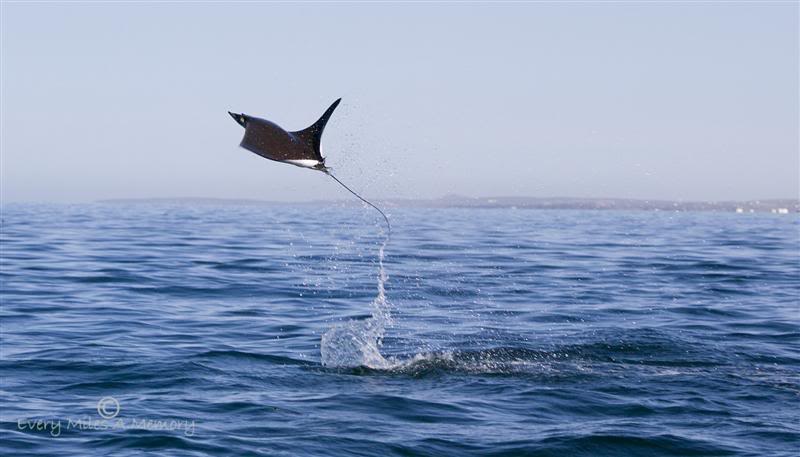All About Manta Rays
January 24, 2014 2 min read

Manta Ray season is upon us! The waters are clear and warm, and these gentle giants are out in force, just in time for Manta Fest which starts in two weeks time. What better way to celebrate these majestic ocean dwellers than by sharing some of the facts that make them so amazing.
The average Manta Ray is a remarkable 3-7 metres long, weighing in at over 1000-1300kg. Because of their size, myths about Manta Rays consuming people have circulated for some time, but we're happy to report that these stories are entirely false. Manta Rays are gentle and curious giants that are able to get close to humans without harming them. While they do have many rows of small sharp teeth, these are only used as a filtering system for their diet of crustaceans, plankton and small fish. And while they do have a long tail spine, it isn't a stinger barb, despite the Manta being closely related to stingrays. Their harmlessness makes every underwater encounter with them a magical and relaxing experience. In the marine world, the Manta Ray is only surpassed in size by sharks and whales, with sharks also being a close relative. Ironically, however, sharks and Orcas are a Manta's main predators! Despite being one of the largest fish, however, it is actually one that we know least about. Groups such as PROJECT MANTA are working hard to document information on Manta Rays and further the research around these majestic ocean beauties.Other Facts
- The name 'Manta' comes from the Spanish word blanket, and the fact that they look like a blanket while gracefully 'flapping their wings' through the water is part of the namesake.
- Interestingly, Manta Ray's have the largest brain to body ratio of all sharks and rays
- Manta's pop out Manta pups every other year, but have a slow reproduction rate
- It is important to only look and not touch, as Manta's can lose their protective mucus membrane if they are touched by humans
- Average life span is 20 years
- In 2008 a very large Manta Ray was discovered on a sidewalk in San Francisco, California. It isn’t known how it got there or why someone would leave it. Authorities were successful in returning it to the water.
- Manta's can often been seen leaping out of water - but the reasons for doing this are still a mystery. Some theories attribute the behaviour to mating rituals, communication and removal of parasites.

- Mantas can be seen in strong numbers all along the Australian East Coast. Some popular hot-spots include North Stradbroke Island (in the warmer Summer months - like right now!), and more frequently throughout the year at Lady Elliot Island, Lady Musgrave Island, Osprey Reef and Heron Island - but they can pop in almost any tropical waters.
- Manta's can be individually identified by the spots on the underside of their bellies. Research foundations such as PROJECT MANTA allow divers to submit photographs of Manta Rays and name the Manta if it is a newly discovered individual.




